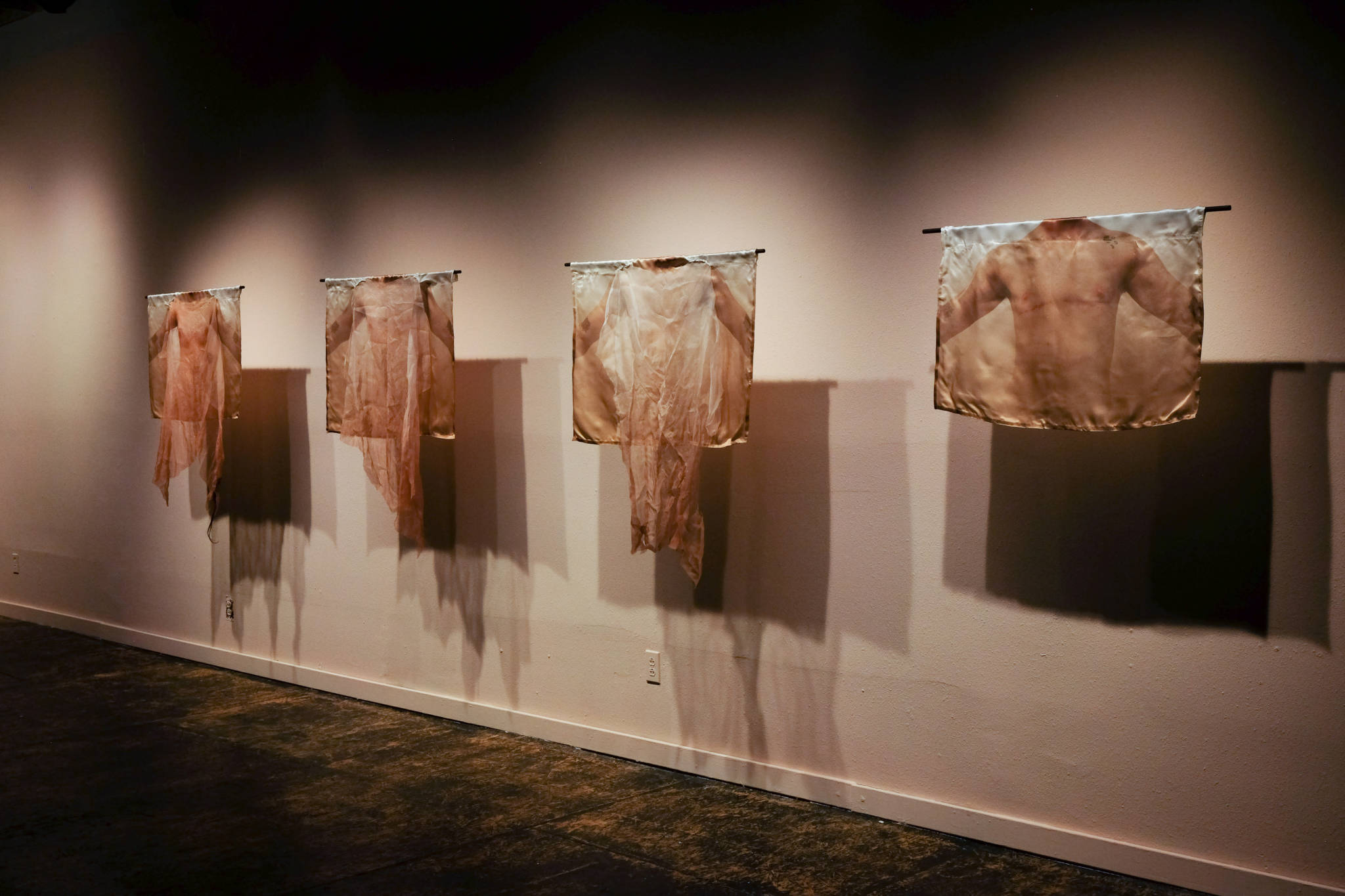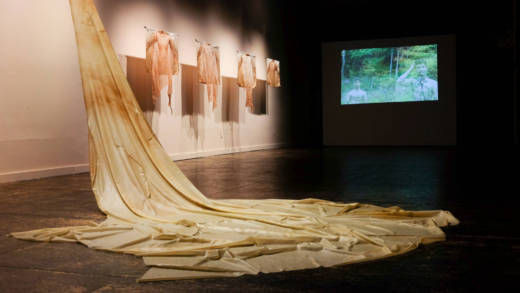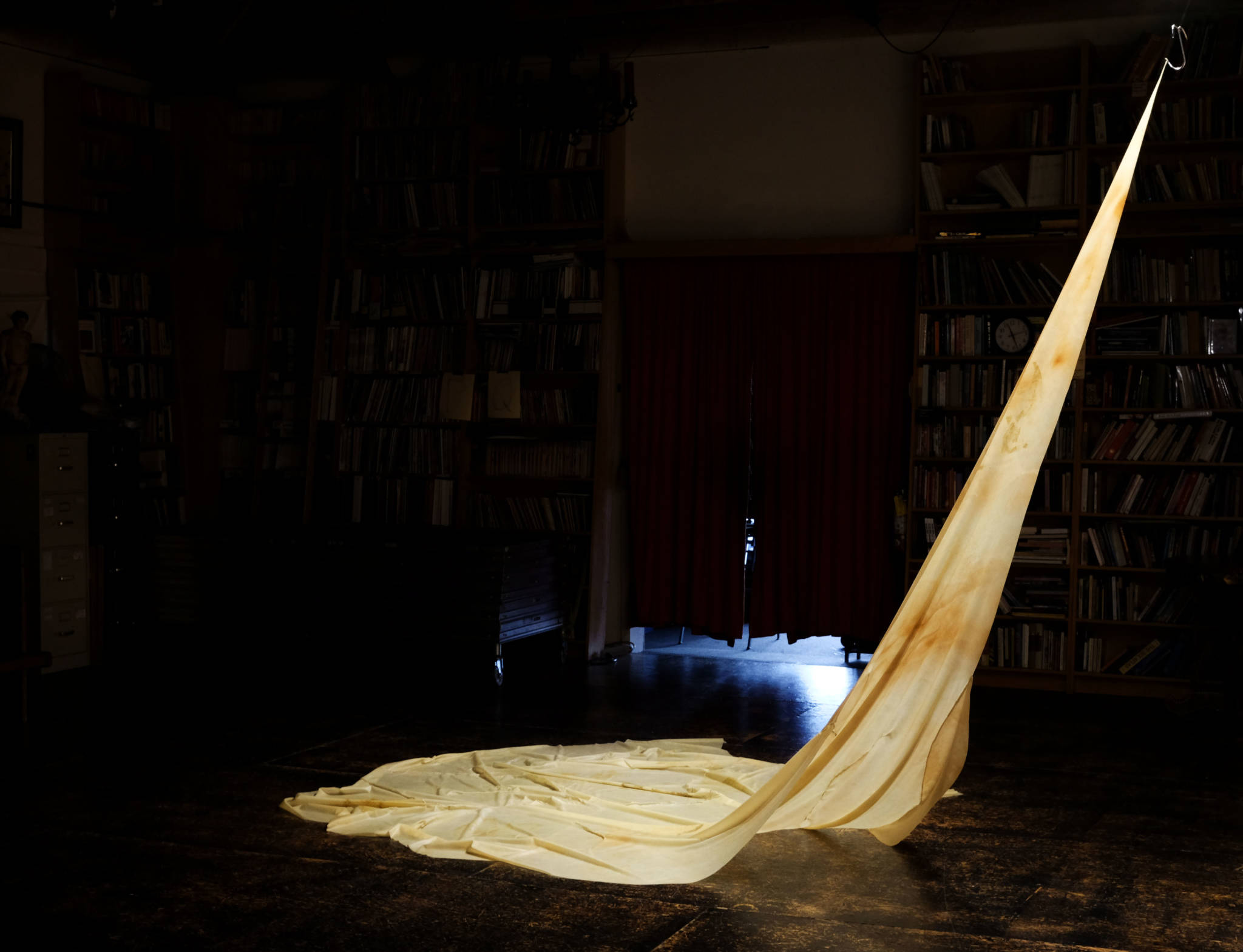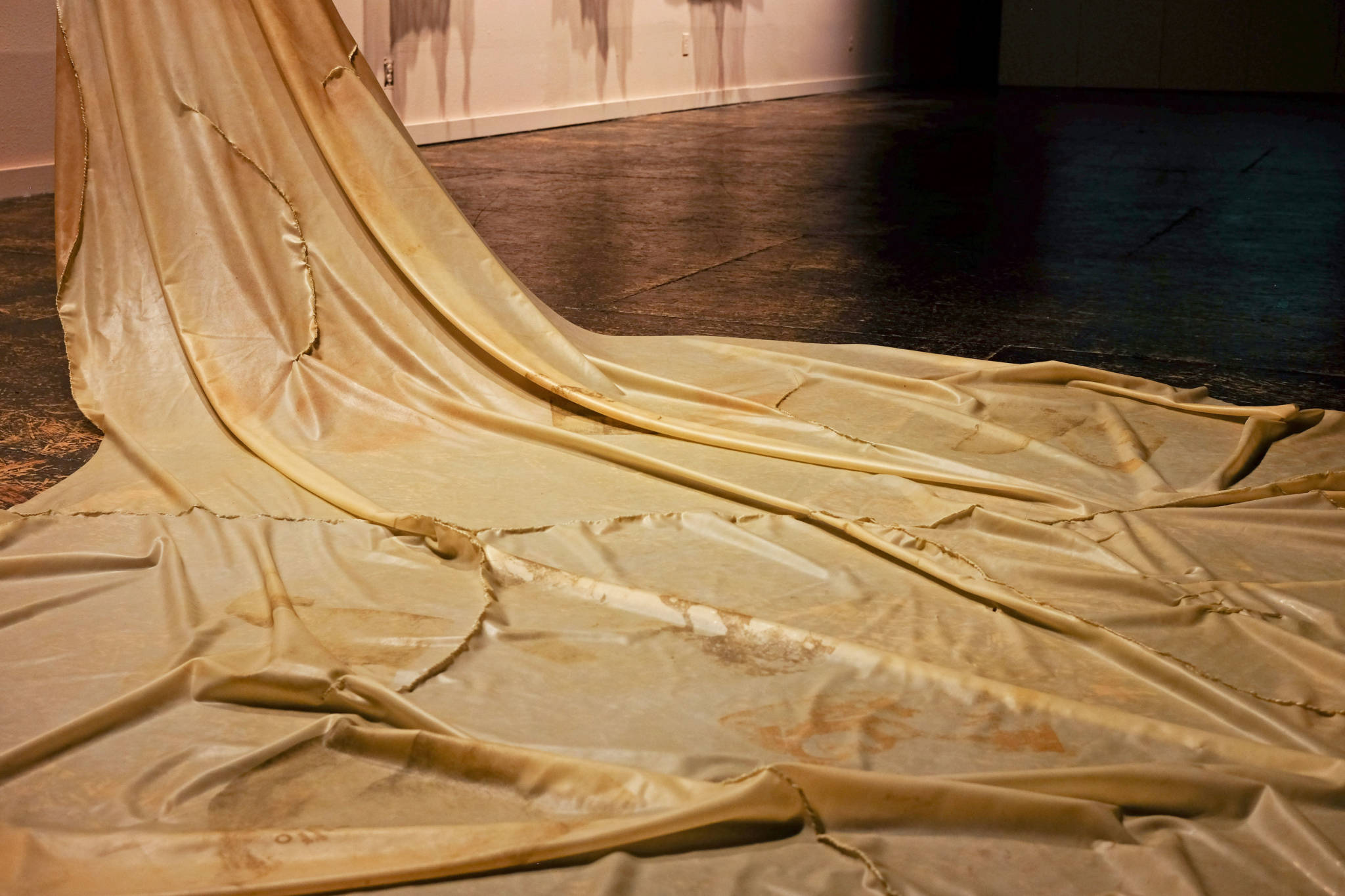In early 2017, San Francisco-based curator Dorothy R. Santos witnessed a performance by multimedia artist Joseph Liatela at the opening reception for We’re Still Working: The Art of Sex Work at San Francisco’s SOMArts Cultural Center. Santos, who maintains a dynamic creative practice focused on digital art and the overlap of biology and technology, immediately approached Liatela about a possible collaboration.
That first dialogue lead to additional conversations about visibility, surveillance, and how identity that rejects oppressive binary definition may be portrayed in contemporary art. Open through Feb. 16 at the Center for Sex & Culture, Surface Tension — Liatela’s first solo exhibition — represents their year-long collaboration with Santos, and visualizes a potent personal transformation.

I arrive at the Center for Sex & Culture (CSC) with enough time to view the installation before interviewing Liatela and Santos. Hung opposite the small but solid library and media archive for which the Center is known worldwide, Surface Tension I-IV immediately draws my attention. Printed on swaths of silk and organza suspended from the ceiling, the four photo objects invite us to witness the gradual shedding of Liatela’s identity as they transitioned.
The organza, draped delicately like a diaphanous blouse that barely masks the artist’s evolving form, is absent from the sequence’s final image. What is revealed is the artist’s altered torso, chest proud and arms spread wide, unburdened by disguise. It captures, with subtlety and precision, a range of emotions — trepidation, joy, relief — that many transgender people feel when exposing the body that fits them to the world at large.
Any movement in the gallery causes the objects to flutter gently, a quality made more notable by the not-so-gentle surgical scars revealed in the photographs and the sutures that bind the tensile materials. Liatela and Santos both aver violence is an element in the work.





